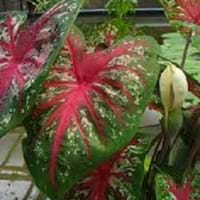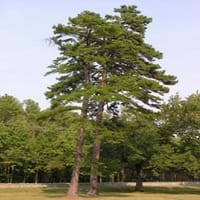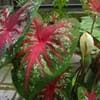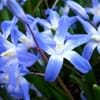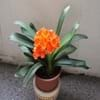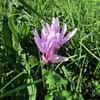Life Span
Annual and Perennial
Perennial
Type
Tender Perennial
Needled or Scaled Evergreen
Origin
Southern Europe, Mediterranean
Mid-Atlantic United States, Southeastern United States, South-Central United States, Texas
Types
Not Available
Not Available
Habitat
gardens, Grassland, Prairies, tropical environments, Tropical regions
Woodland Garden Canopy
USDA Hardiness Zone
7-9
6-9
Sunset Zone
4, 5, 6, 14, 15, 16, 17, 18, 19, 20, 21, 22, 23, 24
Not Available
Habit
Mat-forming
Oval or Rounded
Flower Color
White, Green
Non Flowering Plant
Flower Color Modifier
Bicolor
Bicolor
Fruit Color
Green
Brown, Sandy Brown
Leaf Color in Spring
Gray Green
Green, Dark Green
Leaf Color in Summer
Gray Green
Green, Dark Green
Leaf Color in Fall
Gray Green
Green, Dark Green
Leaf Color in Winter
Light Green
Green, Dark Green
Leaf Shape
Linear
Needle like
Plant Season
Spring, Summer, Fall, Winter
Spring, Summer, Fall, Winter
Sunlight
Full Sun, Partial Sun
Full Sun
Type of Soil
Loam, Sand
Loam, Sand
The pH of Soil
Neutral, Alkaline
Acidic, Neutral
Soil Drainage
Well drained
Well drained
Bloom Time
Spring, Late Spring, Early Summer, Summer, Late Summer, Early Fall
Early Spring, Late Spring, Mid Spring
Tolerances
Drought
Drought
Where to Plant?
Container, Ground, Pot
Ground
How to Plant?
Seedlings, Stem Cutting
Cuttings, Seedlings
Plant Maintenance
Medium
Medium
Watering Requirements
Allow soil to be completely dry in between waterings, Water Deeply, Water less during winter
Average Water Needs
In Summer
Lots of watering
Lots of watering
In Spring
Moderate
Moderate
In Winter
Average Water
Average Water
Soil pH
Neutral, Alkaline
Acidic, Neutral
Soil Type
Loam, Sand
Loam, Sand
Soil Drainage Capacity
Well drained
Well drained
Sun Exposure
Full Sun, Partial Sun
Full Sun
Pruning
Cut or pinch the stems, Do not prune during shooting season, Prune if you want to improve plant shape, Prune prior to new growth, Remove deadheads
Remove damaged leaves, Remove dead branches, Remove dead leaves
Fertilizers
No fertilizers needed
organic fertlizers
Pests and Diseases
fungus, Insects, Red blotch
Littleleaf disease
Plant Tolerance
Drought
Drought
Flower Petal Number
Single
Single
Foliage Texture
Fine
Fine
Foliage Sheen
Matte
Glossy
Attracts
Bees, Birds, Butterflies
Bees, Butterflies
Allergy
Skin irritation
Skin irritation
Aesthetic Uses
Beautification, Showy Purposes
Not Used For Aesthetic Purpose
Beauty Benefits
Not Available
Not Available
Environmental Uses
Air purification
Air purification
Medicinal Uses
No Medicinal Use
Emetic, Laxative, tuberculosis, Vermifuge
Part of Plant Used
Whole plant
Inner Bark, Wood
Other Uses
Showy Purposes
Used for making green dye, Vanillin flavouring is obtained as a by-product
Used As Indoor Plant
No
No
Used As Outdoor Plant
Yes
Yes
Garden Design
Alpine, Container, Edging, Foundation, Groundcover, Mixed Border, Rock Garden / Wall
Not Available
Botanical Name
CALADIUM 'Aaron'
PINUS echinata
Common Name
Aaron Caladium, Angel Wings, Fancy-leaved Caladium
Shortleaf Pine
In Hindi
Aaron Caladium
Shortleaf Pine
In German
Aaron Caladium
Shortleaf Pine
In French
Aaron Caladium
Shortleaf Pine
In Spanish
Aaron Caladium
Shortleaf pino
In Greek
Aaron τροπικό φυτό
Shortleaf Pine
In Portuguese
Aaron Caladium
Shortleaf Pine
In Polish
Aaron Caladium
Shortleaf Pine
In Latin
Aaron Caladium
Pinus Shortleaf
Phylum
Tracheophyta
Coniferophyta
Class
Liliopsida
Pinopsida
Order
Alismatales
Pinales
Clade
Angiosperms, Monocots
Not Available
Tribe
Not Available
Not Available
Subfamily
Aroideae
Pinoideae
Number of Species
Not Available
Not Available
Properties of Aaron Caladium and Shortleaf Pine
Wondering what are the properties of Aaron Caladium and Shortleaf Pine? We provide you with everything About Aaron Caladium and Shortleaf Pine. Aaron Caladium doesn't have thorns and Shortleaf Pine doesn't have thorns. Also Aaron Caladium does not have fragrant flowers. Aaron Caladium has allergic reactions like Skin irritation and Shortleaf Pine has allergic reactions like Skin irritation. Compare all the properties and characteristics of these two plants. Find out which of these plant can be used as indoor plant. If you are interested to decorate your house and garden, find out aesthetic uses, compare them and select the plant which will beautify your surrounding. Along with beautification, try comparing medicinal and edible uses of Aaron Caladium and Shortleaf Pine and you can choose the plant having best and most benefits.
Season and Care of Aaron Caladium and Shortleaf Pine
Season and care of Aaron Caladium and Shortleaf Pine is important to know. While considering everything about Aaron Caladium and Shortleaf Pine Care, growing season is an essential factor. Aaron Caladium season is Spring, Summer, Fall and Winter and Shortleaf Pine season is Spring, Summer, Fall and Winter. The type of soil for Aaron Caladium is Loam, Sand and for Shortleaf Pine is Loam, Sand while the PH of soil for Aaron Caladium is Neutral, Alkaline and for Shortleaf Pine is Acidic, Neutral.
Aaron Caladium and Shortleaf Pine Physical Information
Aaron Caladium and Shortleaf Pine physical information is very important for comparison. Aaron Caladium height is 30.50 cm and width 30.50 cm whereas Shortleaf Pine height is 1,830.00 cm and width 300.00 cm. The color specification of Aaron Caladium and Shortleaf Pine are as follows:
Aaron Caladium flower color: White and Green
Aaron Caladium leaf color: Gray Green
Shortleaf Pine flower color: Non Flowering Plant
- Shortleaf Pine leaf color: Green and Dark Green
Care of Aaron Caladium and Shortleaf Pine
Care of Aaron Caladium and Shortleaf Pine include pruning, fertilizers, watering etc. Aaron Caladium pruning is done Cut or pinch the stems, Do not prune during shooting season, Prune if you want to improve plant shape, Prune prior to new growth and Remove deadheads and Shortleaf Pine pruning is done Remove damaged leaves, Remove dead branches and Remove dead leaves. In summer Aaron Caladium needs Lots of watering and in winter, it needs Average Water. Whereas, in summer Shortleaf Pine needs Lots of watering and in winter, it needs Average Water.
